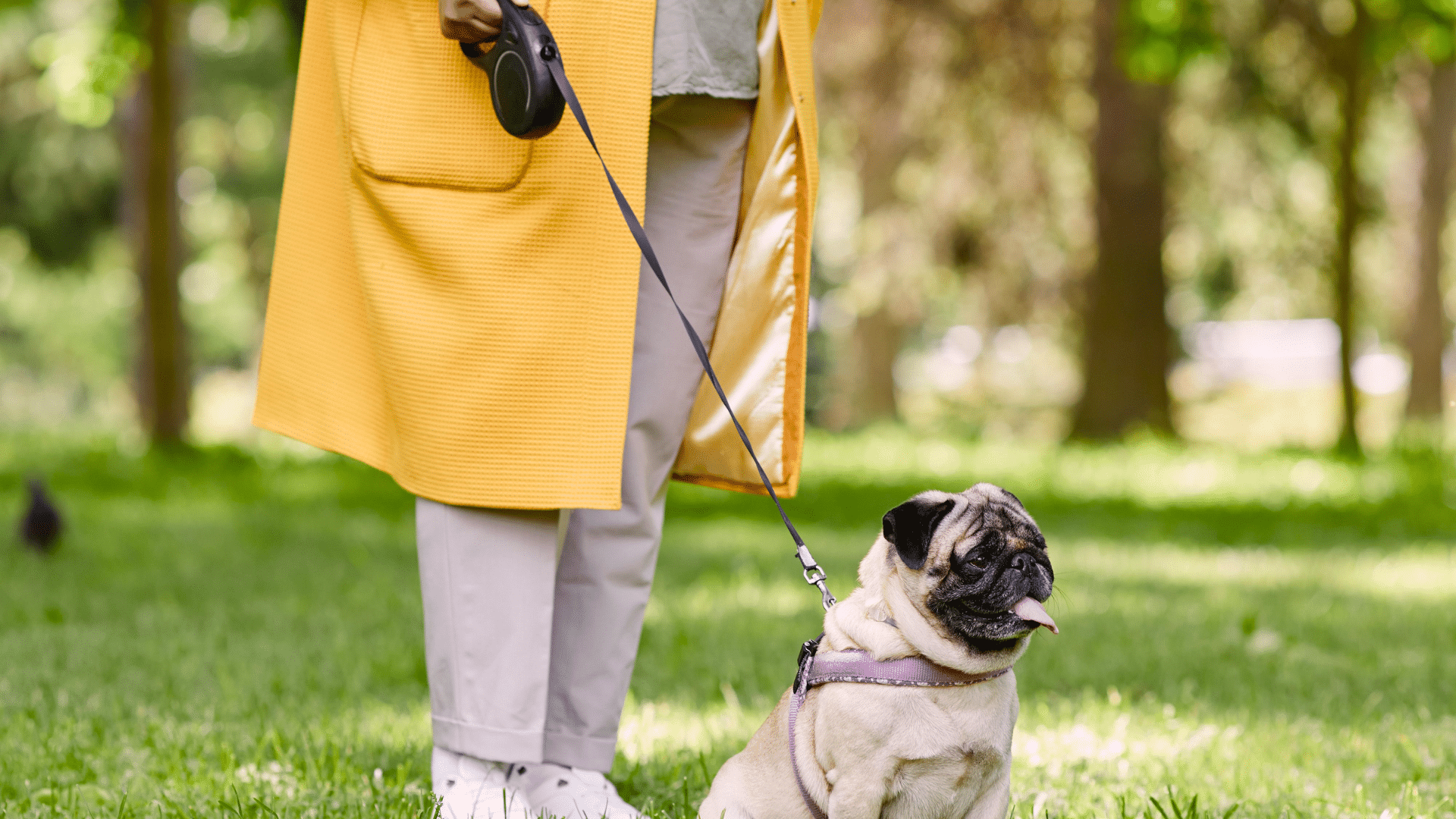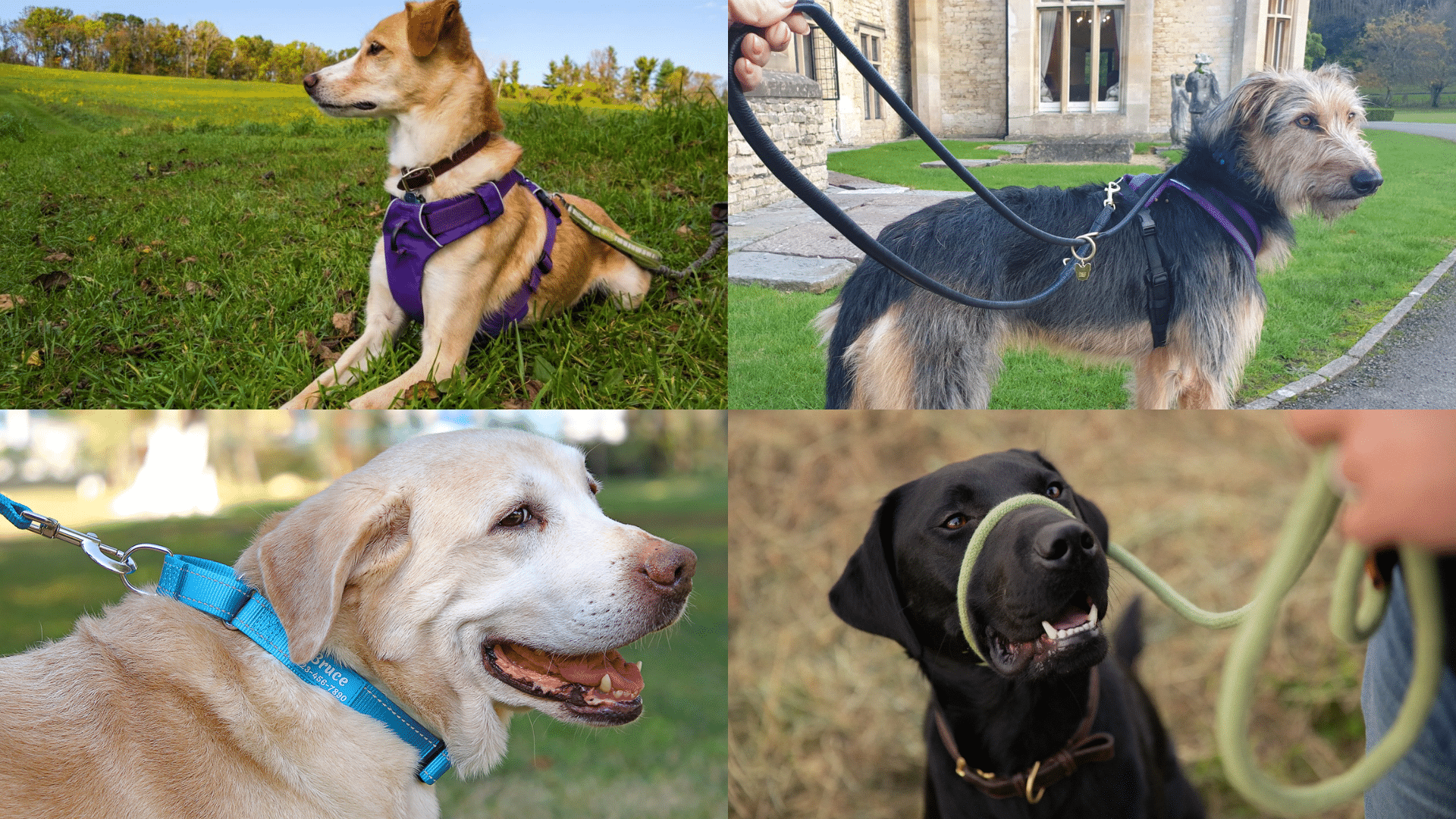A family enjoys a peaceful day at the park until a dog breaks free, chasing a child and causing panic.
What started as a fun outing quickly turned into chaos, all because the dog wasn’t on a leash. Incidents like this show why leash training is such an important part of being a responsible dog owner.
Learning to use a leash properly is one of the first and most valuable lessons when caring for a pet.
Many try, but few know how to help their dogs feel calm and confident on walks.
Proper leash training isn’t just about control; it’s about safety, trust, and connection. In this guide, I’ll share how to train your dog to enjoy calm, pleasant walks with you.
Why Leash Training is Important?
Leash training offers several benefits for both you and your dog. Understanding the main reasons behind leash training can help you see its real value.
- Safety: Prevents your dog from running into traffic or dangerous areas.
- Control: Allows you to manage your dog’s behavior in public spaces.
- Prevents conflicts: Keeps your dog from fighting or interacting aggressively with other animals.
- Obedience: Builds good walking habits and improves overall discipline.
- Enjoyment: Makes walks peaceful, enjoyable, and stress-free for both of you.
- Legal compliance: Helps you follow city or local leash laws.
- Responsibility: Shows you’re a considerate and responsible dog owner.
- Security and trust: Gives your dog a sense of safety, confidence, and connection with you.
Basic Leash Training Techniques to Teach Your Dog

Leash training helps your dog learn patience, focus, and discipline during walks. Each of the following techniques will help you train your dog to stay calm, walk politely, and respond well to commands.
1. Start Indoors with Leash Familiarity
Begin leash training in a quiet area of your home where your dog feels safe. Let your dog wear the leash for short periods without pulling or pressure.
Offer small treats and calm praise to reward relaxed behavior.
The goal is to help your dog view the leash as something normal, not scary. Starting indoors reduces distractions and builds confidence.
Once your dog feels comfortable, slowly introduce short walks inside before practicing in outdoor spaces with more stimulation.
2. Teach “Heel” Command
Hold a treat near your leg and walk slowly while saying “heel.” Each time your dog walks beside you without pulling, reward it with the treat and gentle praise.
Practice for a few minutes at a time to keep your dog’s attention.
With regular practice, your dog learns that walking close to you means good things happen.
This command helps prevent tugging and keeps your dog focused on your movements, making every walk calmer and more controlled.
3. Practice Loose Leash Walking
Loose leash walking teaches your dog to walk politely without pulling. Start walking, and when your dog begins to pull forward, stop immediately. Wait until the leash becomes loose again before continuing.
Your dog will soon realize that pulling doesn’t lead to progress. Reward calm walking with treats or kind words.
Over time, your dog will learn to move at your pace, creating a smooth and enjoyable walking experience for both of you every time.
4. Use Treats as Motivation
Dogs respond best to positive reinforcement, so keep small treats on hand during walks.
Reward your dog when it looks at you, stays by your side, or listens to a command. Treats make training enjoyable and help your dog stay focused.
Use soft, bite-sized rewards so your dog can quickly return to walking.
Over time, your dog will connect calm behavior with positive outcomes, making leash training consistent, rewarding, and something your dog actually enjoys.
5. Teach “Sit” and “Stay” on Leash
While walking, pause and ask your dog to “sit” or “stay.” Reward calm behavior and slowly increase the time your dog remains in place.
This builds patience and focus even with distractions nearby.
Practicing these commands helps you manage your dog in public spaces such as crosswalks, sidewalks, or parks.
It also teaches your dog to stay attentive to your cues, creating a sense of control and safety during walks in any environment.
6. Gradually Increase Distractions
Once your dog walks well in quiet places, introduce distractions slowly. Start with mild ones like passing cars or neighbors.
Reward calm behavior and gently guide your dog’s attention back to you if it becomes distracted.
Gradually add more challenging situations, such as other dogs or busy parks. This helps build confidence, focus, and obedience in real-world settings.
By increasing difficulty step by step, your dog learns to stay calm and respond reliably in any environment.
7. Manage Excitement and Overstimulation
If your dog becomes overly excited during walks, stop and remain calm. Avoid tugging or raising your voice. Instead, wait until your dog relaxes, then reward that calm behavior.
Over time, your dog learns that excitement doesn’t move the walk forward, calmness does.
Managing overstimulation helps your dog stay focused, especially around other pets, people, or noises.
This technique builds emotional control, ensuring your dog feels secure and well-behaved, even in busy or unpredictable situations.
8. Handle Pulling with Redirection
When your dog pulls ahead, stop walking and wait until it returns to your side.
Use a treat or calm voice to redirect its focus. Reward your dog once it walks beside you again. Repeat this every time pulling occurs.
This consistent method teaches your dog that pulling won’t get results, but calm walking will.
Over time, your dog will naturally stay near you, improving leash control and making walks smoother and more enjoyable.
9. Practice “Leave It” Command
Place a treat or toy on the ground, say “leave it,” and wait for your dog to look away. Reward with a different treat when it follows your command.
This exercise teaches your dog to resist distractions during walks, such as food, trash, or wildlife.
Practice often to strengthen control and focus.
With time, your dog will understand that ignoring tempting items brings better rewards, keeping both of you safe and stress-free during outdoor adventures.
10. Use Consistent Verbal Cues
Consistency is key when teaching leash commands. Always use the same words, like “heel,” “sit,” or “stay”, in a calm tone.
Avoid switching to similar words, as this can confuse your dog. Dogs learn best through repetition and clear direction.
Over time, they’ll respond automatically to familiar cues, even in distracting environments.
Consistent language strengthens your communication and ensures your dog knows exactly what to expect during every walk or training session.
11. End on a Positive Note
Always finish training sessions with something your dog enjoys, like gentle praise, playtime, or a favorite treat.
Positive endings leave your dog feeling happy and motivated for the next walk. This approach builds trust and reinforces the idea that leash time is fun, not stressful.
Keeping sessions short and ending on success helps maintain progress.
Over time, your dog will look forward to each leash training session, making every walk a rewarding experience for both of you.
Choosing the Right Type of Leash for Your Dog

Selecting the right leash is just as important as teaching your dog how to walk properly.
A good leash keeps your dog safe, comfortable, and easy to control. The wrong one can cause discomfort or make walking difficult.
A leash that’s too heavy, short, or rough may harm your dog’s skin or restrict movement. On the other hand, a well-balanced leash gives both control and freedom during walks.
These are some key factors to consider before choosing:
- Length: A leash between 4 to 6 feet works best for control and movement balance.
- Width: Wider leashes are better for large dogs, while thin ones suit small breeds.
- Weight: Lightweight leashes are easier to manage, especially for puppies or small dogs.
- Handle Comfort: Choose padded or soft handles to avoid hand strain on long walks.
- Visibility: Reflective leashes increase safety during nighttime or early morning walks.
- Durability: Pick materials that can handle daily wear, weather, and chewing habits.
Safety Tips for Leash Walking in Different Environments
Leash walking isn’t just about training your dog; it’s also about keeping both of you safe wherever you go.
Even if you are walking in a park, on a busy street, or in the evening, following safety measures can prevent accidents and make walks more enjoyable.
| Environment / Situation | Safety Tip |
|---|---|
| General Walks | Inspect your leash, collar, and harness regularly for wear, fraying, or broken clips. |
| Low Light (Morning or Night) | Use reflective leashes, collars, or LED lights for better visibility. |
| Crowded or High-Traffic Areas | Keep your dog close and maintain a short leash for better control. |
| Around Other Dogs or Wildlife | Stay alert to avoid sudden lunges or confrontations. |
| Near Busy Roads or Construction Zones | Avoid these areas whenever possible to limit distractions and hazards. |
| Long Walks or Hot Weather | Carry water to keep your dog hydrated and comfortable. |
| Public Spaces | Always clean up after your dog to show respect and maintain cleanliness. |
By following these safety tips, you can make every walk calm, controlled, and secure. Staying mindful of your environment keeps your dog safe and strengthens your bond during every outing.
Conclusion
Leash training is more than just connecting a rope to your dog’s collar. It’s about building trust, safety, and understanding between you and your furry friend.
A proper leash helps prevent accidents, protects others, and keeps your dog confident and calm.
Always choose a leash that fits comfortably and suits your dog’s size and behavior. Start practicing indoors where distractions are fewer, then move outdoors for real walks.
Stay patient, reward every good behavior, and treat leash time as a bonding experience rather than a chore.
Each calm step your dog takes beside you strengthens your relationship and ensures safer walks for everyone around.
How did your dog react the first time you tried leash training? Tell us your story in the comments below.








